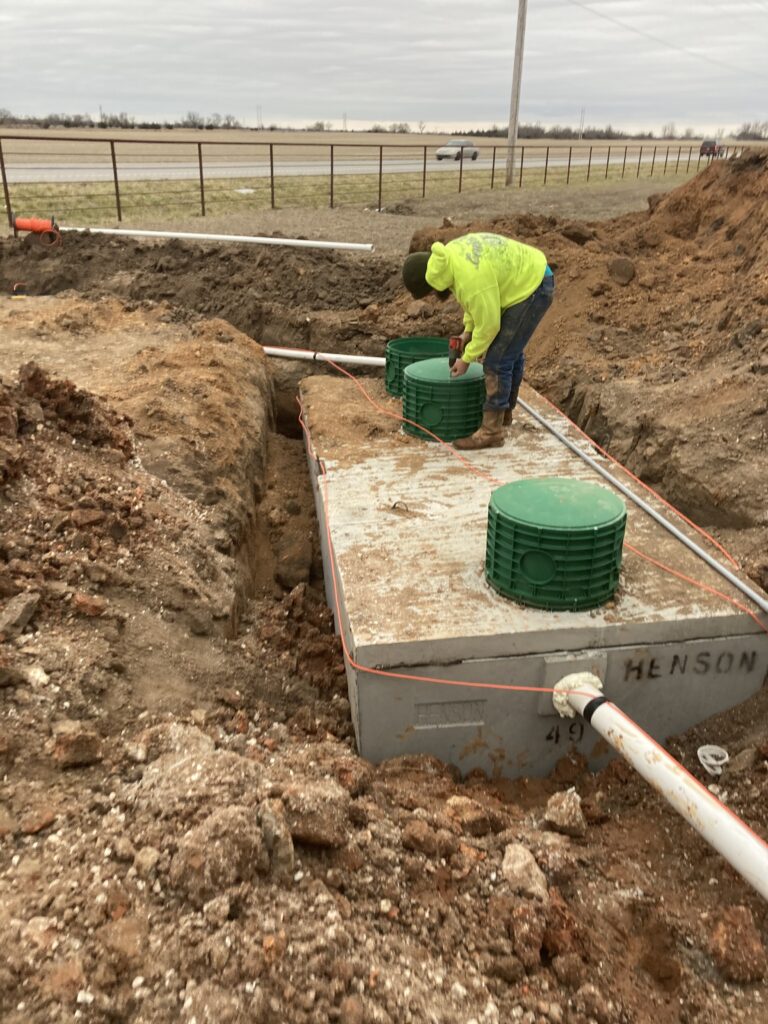KEEP YOUR YARD LOOKING NICE AND NEAT
We install all types of septic systems from ,Just replacing a septic tank to all types of septic systems for what works best on your property.
Conventional System
A decentralized wastewater treatment system consisting of a septic tank and a trench or bed subsurface wastewater infiltration system (drainfield). A conventional septic system is typically installed at a single-family home or small business.
The gravel/stone drainfield is a design that has existed for decades. The name refers to the construction of the drainfield. With this design, effluent is piped from the septic tank to a shallow underground trench of stone or gravel. A geofabric or similar material is then placed on top of the trench so sand, dirt, and other contaminants do not enter the clean stone.
Effluent filters through the stone and is then further treated by microbes once it reaches the soil below the gravel/stone trench.
Gravel/stone systems are relatively large in overall footprint and may not be suitable for all residential sites or conditions.
Drip Distribution System
The drip distribution system is a type of effluent dispersal that can be used in many types of drainfields. The main advantage of the drip distribution system is that no large mound of soil is needed as the drip laterals are inserted into the top 6 to 12 inches of soil. The disadvantage of the drip distribution system is that it requires a large dose tank after the septic tank to accommodate the timed dose delivery of wastewater to the drip absorption area. Additional components, such as electrical power, are necessary for this system, requiring an added expense and increased maintenance.
Septic Tank
A buried, watertight tank designated and constructed to receive and partially treat raw domestic sanitary wastewater. Heavy solids settle to the bottom of the tank while greases and lighter solids float to the top. The solids stay in the tank while the wastewater is discharged to the drainfield for further treatment and dispersal.
Aerobic Treatment Unit
Aerobic Treatment Units (ATUs) use many of the same processes as a municipal sewage plant, but on a smaller scale. An aerobic system injects oxygen into the treatment tank. The additional oxygen increases natural bacterial activity within the system that then provides additional treatment for nutrients in the effluent. Some aerobic systems may also have a pretreatment tank and a final treatment tank including disinfection to further reduce pathogen levels.
The benefits of this system are that it can be used in homes with smaller lots, inadequate soil conditions, in areas where the water table is too high, or for homes close to a surface water body sensitive to contamination by nutrients contained in wastewater effluent. Regular life-time maintenance should be expected for ATUs.

